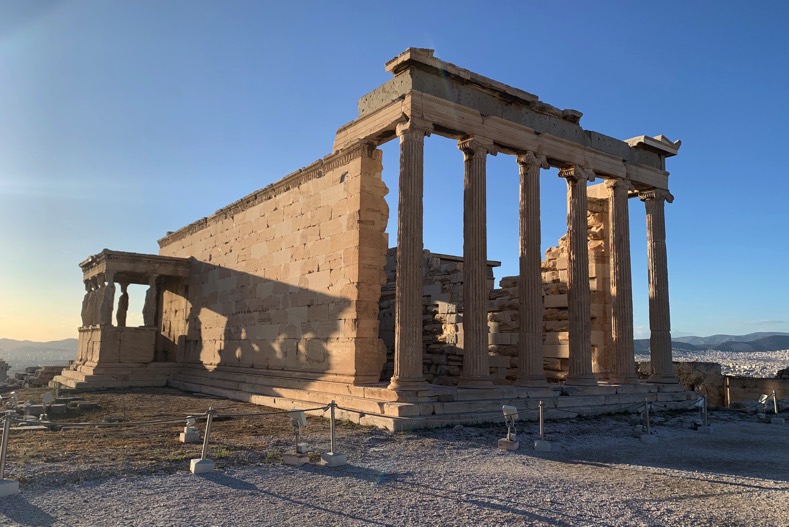On a recent business trip to Athens, I got to visit what many believe to be a site that epitomizes ancient Greece. It is home to some of the most perfect structures known to man, which made visiting the Acropolis the highlight of my trip.
Perched on a hill, the iconic Parthenon temple is visible from a distance, as I headed towards what at first appears to be rising out of the dust. The Parthenon temple the local guide tells me is dedicated to Athena, the Goddess of wisdom and war, and that’s from where the name Athens comes from. It was also this Goddess that planted the very first olive tree which signaled the founding of Athens on the spot.
Discovering the Acropolis of Athens as it turns out requires having the will and ability to track uphill, through winding steep pathways that seem almost to snake up the top. It isn’t for people who aren’t in top physical condition like myself, but even I was beginning to fade as we started to reach the top and my shoes begun to slip in places it was worn. Once on top though the site is, fortunately, flatter, still there are places where the ground is uneven and unstable.
The Great Parthenon
My first impressions of the Parthenon was that it didn’t resemble anything I had seen in the pictures. In fact, it appeared to be a construction or building site of sorts. The towering scaffoldings and cranes almost alluded to the buildings being built instead of the current restoration underway for a few years. The temple appeared partly dismantled with stones and part of the columns piled in one corner ready to be put into position.
The temple is said to be built on the spot where the Goddess Athena planted the olive tree. The row of maidens draped in tunics holds up the roof, though the ones you see on the site are copies with the originals safely locked up in the British Museum.
The Acropolis Museum
To me, part of exploring Acropolis was learning and seeing how people lived in the city. That required a visit to the Acropolis Museum. It is a word-class setting, which houses all the statues and friezes that were once in the Parthenon.
Approaching the museum, the clean, modern design does not prepare you from what’s inside. Once you’re in, you’re walking above the remains of the ancient city. Kitchens, bedrooms and latrines of ancient Greece are all visible from a bird’s eye view.
The Odeon of Herodes Atticus
Taking the pedestrian route past the museum, I made my way to Odeon of Herodes Atticus. The solid arches give you a glimpse of what the ancient theatre might have looked like brand new back in 161AD. Originally built by a wealthy Athenian in memory of his wife, the 500 seat theater was home to opera, music and live concerts.
The Temple of Olympian Zeus
Finally, I made my way to the Temple of Olympian Zeus. Surrounded by a grassy park, the gate was shut when I arrived, so I had to make do with a view from the railings. The temple was built several centuries ago, but fell out of fashion during the third century AD, with the stones taken out and used to create other structures. Today, a pretty sizable group of Corinthian columns can be seen, along with the one that fell over. While not enough to quench by the thirst for learning more about the temple, I was running out of time and had to head back.

